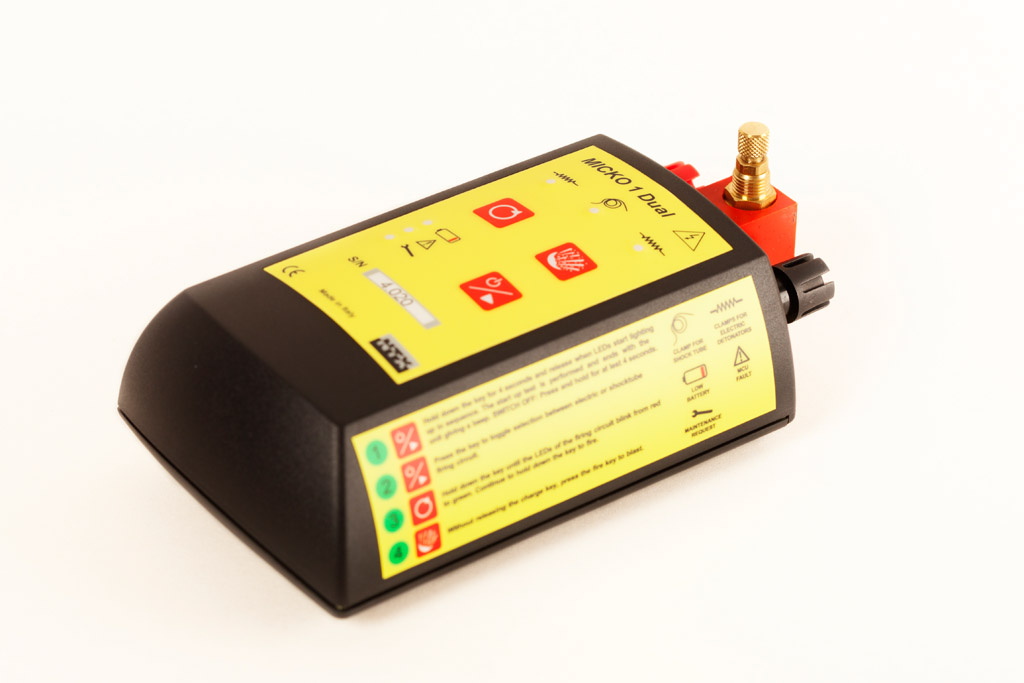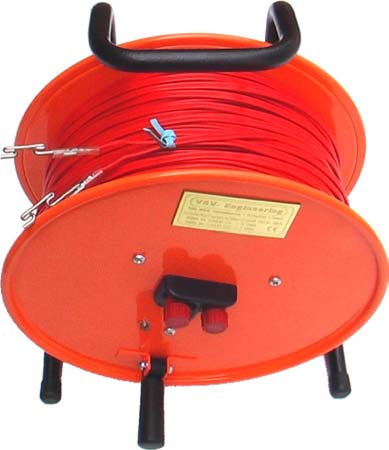Normal and flameproof blasting machines
Blasting machines are portable devices that deliver the necessary energy to initiate electric blasting caps into the blasting system.
The devices currently used to initiate electric blasting caps use capacitors to store the necessary energy of the blasting system.
Blasting machines are operated with a special detachable key which, according to the supply source, actuates the alternator or provides the connection to the battery or the network.
The charge status of the load capacitor is indicated by a signal light. The capacitor is discharged and the stored energy is delivered to the blasting system either automatically when reaching the charge status or by rotating the key from the charge position to the explosion position.
In order to discharge the residual voltage of the load capacitor, blasting machines are provided with a fuse.
Blasting machines used in firedamp mines are additionally equipped with a locking relay that limits the impulse delivery duration of the detonator to 4 ms.
The maximum number of caps that can be initiated with a detonator is indicated on the label of the device or on the nomogram.


Blasting cable
When using low-intensity electric blasting caps, the current is conveyed from the initiation source to the cap circuit through blasting cables that must be insulated and withstand a voltage of 2000 V.
For safety reasons, specific regulations provide that explosive charges should be triggered from a distance of at least 100 m.
In order to have low resistivity and high mechanical strength, blasting cables are made of multi-core copper and/or tinned steel, with a section resistivity of maximum 10 ohm/100 m.
Cap circuits are usually connected with the wires of the caps; cap wire length must be chosen so that the connection of two neighbouring holes should not require extension lines. In special cases, for oversized blasting and isolated holes located far away from each other, insulated extension lines can be used in combined blasting systems (detonating cord and power supply).
In practice, low-intensity caps are initiated with ROY-type wire conductors.


